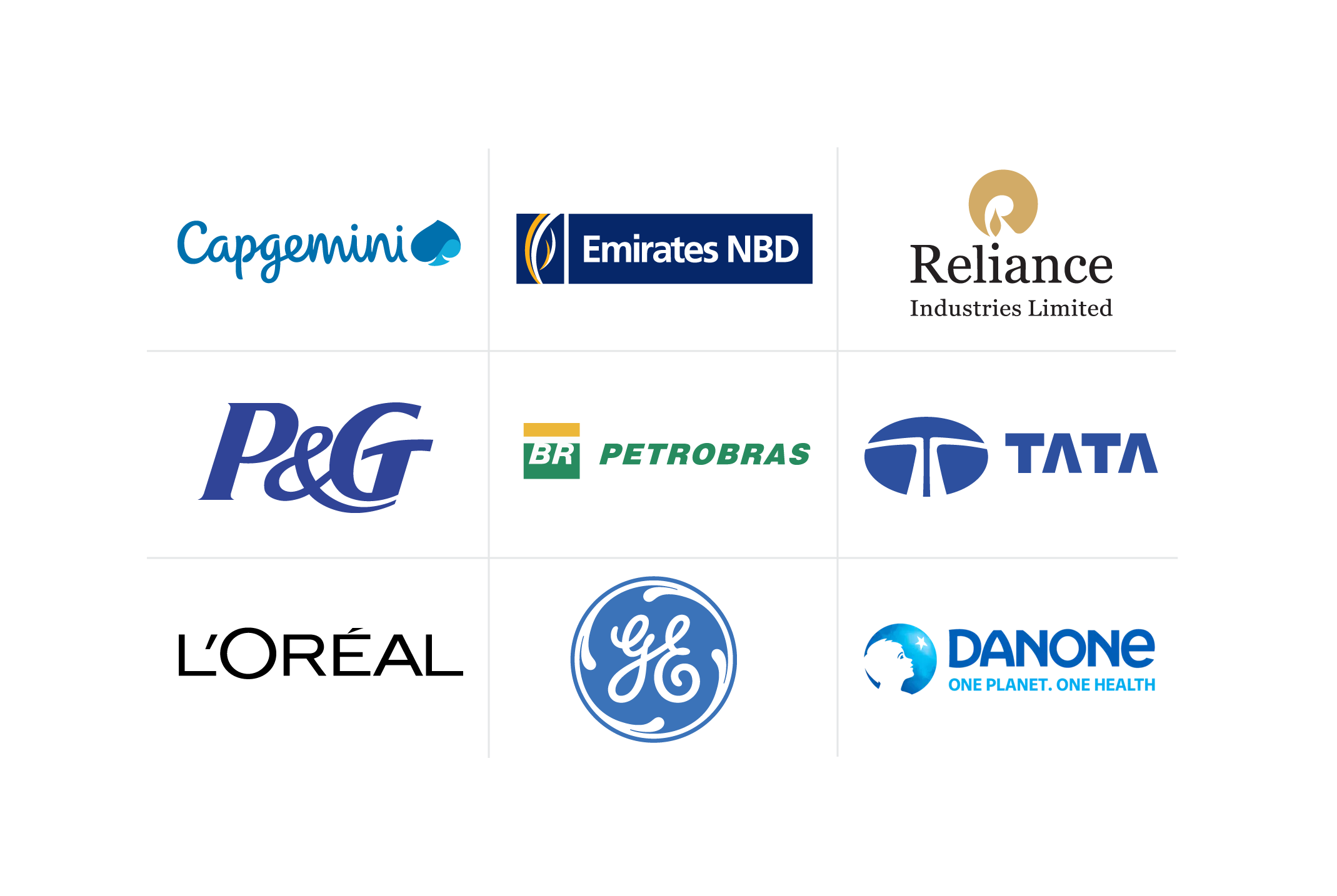Skills-Based Workforce Planning for Companies: Shaping Future Success
A skills-based workforce planning approach can help your company improve performance, retain employees, and stay competitive in an evolving market. Discover how training and development plans can help your company evolve with changing organizational needs.
![[Featured Image] Employees sit at a table engaging in skills-based workforce planning.](https://d3njjcbhbojbot.cloudfront.net/api/utilities/v1/imageproxy/https://images.ctfassets.net/2pudprfttvy6/5wf0DtprhAAMigHQr67ERP/b263da776d5f313a3298130787415c48/GettyImages-1418017729.jpg?w=1500&h=680&q=60&fit=fill&f=faces&fm=jpg&fl=progressive&auto=format%2Ccompress&dpr=1&w=1000)
As the job market and demands change, more employers are finding success with skills-based workforce planning. This means that instead of hiring based on traditional qualifications, employers are looking to build a workforce surrounding the knowledge base and skills needed for success.
Recent research from Deloitte indicates that organizations emphasizing a skills-first culture are 63 percent more likely to achieve positive outcomes in various business and workforce metrics [1]. This article guides you toward further understanding this approach, including what skills-based workforce planning is, the benefits and challenges you might find, and how to transition toward this environment.
Understanding skills-based workforce planning
How modern companies operate has dramatically changed over the past decade, with COVID-19 accelerating the pace of this evolution. The rise of new technologies has led to rapid integration of digital systems within workplaces, leading to the demand for new skills among employees. The 2025 World Economic Forum (WEF) Future of Jobs Report indicates company environments may shift and restructure, relying on automation for many data analytics tasks while opening new roles for humans surrounding decision-making, reasoning, management, and similar tasks [2].
Skills-based workforce planning involves examining what skills are necessary for a job and finding people who fit those needs, regardless of where they learned them. This approach is becoming more popular across the United States, with industry leaders like IBM implementing hiring policies based on applicant skills rather than degrees alone.
This method is especially beneficial for businesses because it ensures the people they hire have the skills to perform their job tasks effectively. Rather than relying on traditional qualifications, businesses focus on finding the person with the strongest skill set to match their needs. As business needs change to meet new demands, this method ensures employers select candidates with skills that align with the current organizational environment, helping them remain competitive and innovative.
Differences with a traditional approach
Unlike traditional workforce planning, which might rely heavily on degrees and past job titles, skills-based planning is more fluid. It allows businesses to form teams based on current project needs, bringing together the right mix of skills and abilities for each challenge. This could mean changing team compositions as projects evolve, making the company more agile and better equipped to tackle new challenges. Companies utilize this method to enable employees to join projects across departments, offering upskilling and reskilling pathways to facilitate employee growth and internal movement.
Another difference between skills-based and traditional methods is how employers and employees define their success. Success in a skills-based environment is determined by an employee’s current ability to perform tasks and solve problems rather than their academic achievements or previous job titles. This shift emphasizes continuous learning and skill development, encouraging employees to grow and adapt with the company.
Benefits of adopting a skills-based approach
Adopting a skills-based approach to workforce planning and development offers numerous benefits that can significantly enhance the efficiency and productivity of employees within an organization.
Meeting actual demands: A skills-based approach allows companies to directly address the specific needs of their operations. This helps to align employee capabilities with current projects and goals.
Increase in productivity: By focusing on skills rather than titles, employers place employees in roles in which they can naturally excel, increasing efficiency and productivity.
Enhanced employee retention: Many employees express that a skills-focused work environment would significantly improve their job satisfaction.
High company performance: Skills-based organizations are more likely to create a positive workforce environment, respond to and anticipate change, innovate, and retain high-performing employees.

Challenges of adopting a skills-based approach
This shift also comes with a new set of challenges. By understanding both aspects, you can have a more comprehensive view of skills-based workplace planning and how to take steps to maximize the benefits and avoid common pitfalls of this approach. Challenges you might find along the way include:
Identification and assessment of skill needs: To effectively execute skills-based workforce planning solutions, employers need to accurately identify the specific skills required for different roles. This involves assessing current employee capabilities, which requires time, resources, and an effective skills assessment framework.
Training and development: To support a skills-based approach, companies must invest in comprehensive training and development programs designed to meet a diverse set of needs. Developing these programs requires a developed strategy and may be resource-intensive.
Technology and infrastructure: Many skills-based approaches rely on technology platforms capable of managing and analyzing large data sets on skills, performance, and learning progress. The start-up cost may be high in these scenarios.
How to transition your workplace toward a skills-based approach
To begin transitioning your workplace toward a skills-based approach, you can start by relaxing traditional hiring requirements that focus on educational background or specific career paths. Instead, open opportunities based on demonstrated skills and competencies. This widens the pool of potential candidates by removing the barrier of formal qualifications, which may not always be the best indicator of someone’s ability to succeed in a role.
To effectively hire candidates with the skills you require, you will need to conduct a skills gap analysis. A skills gap analysis involves comparing the skills currently present within your organization to those needed for future success. This analysis highlights areas where your workforce may lack critical skills, which can guide your hiring practices and training programs.
Once you have your skills gap analysis complete, you can redefine job descriptions, project requirements, and team roles in terms of specific skills and competencies rather than traditional titles or educational backgrounds. When redefining these roles, record a detailed analysis of what each role contributes to the organization and identify the skills necessary to achieve these contributions effectively.
Tips to keep in mind when transitioning to a skills-based approach
Creating an integrated system that prioritizes skills within your workplace takes time, but you can leverage your stakeholders, technology, and analytics to make this transition easier. Tips to effectively transition your workforce include:
Establishing key stakeholders: Identify and involve key stakeholders from across the organization to help define the skills necessary for achieving company goals.
Using data analytics to forecast skills needs: Use predictive data analytics based on your current data to forecast future skills needs based on industry trends and strategic objectives.
Utilizing technology: Make use of learning management systems designed to help you maintain a strategic and skilled workforce. These platforms can aid in personalized training and facilitate internal talent mobility by matching employee skills with project needs.
Advocating for new policies: When you can, advocate for workplace policies that focus on skills. Over time, this will help build an ecosystem that supports education and training in line with skills-based approaches.
Measuring success and continuous improvement
As you transition to a skills-based approach, establish clear key performance indicators (KPIs) to monitor employee development and guide future training programs. These indicators help gauge whether the skills-based approach positively impacts both employee development and organizational performance.
Regularly reviewing these metrics, alongside feedback from employees and managers, can help you successfully continue to evolve your training and development approach. Plus, as your organizational objectives change, you’ll have the data you need to deploy new tools and programs effectively.
Learn more on Coursera
Skills-based workforce planning designs a workforce prepared to meet company demands. While transitioning to this approach requires planning and investment, it can lead to exciting benefits related to organizational progress, innovation, and productivity.
With Coursera for Business, you can train teams across your organization in the skills that matter most in today’s digital economy. Your employees will gain access to content from 350+ leading universities and industry partners, where they can build real-world experience with innovative skills, tools, and technologies while earning globally recognized credentials. Our customizable, scalable learning solutions balance workplace and technical skills training in diverse formats, from video clips to guided projects and Professional Certificates. Accelerate your digital transformation and equip employees to drive growth with Coursera.
Article sources
Deloitte. “The skills-based organization: A new operating model for work and the workforce, http://www2.deloitte.com/content/dam/insights/articles/us175310_consulting-the-skills-based-org-report/DI_The-skills-based-organization-report.pdf.” Accessed June 13, 2025.
This content has been made available for informational purposes only. Learners are advised to conduct additional research to ensure that courses and other credentials pursued meet their personal, professional, and financial goals.

